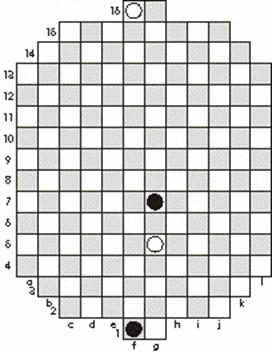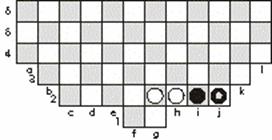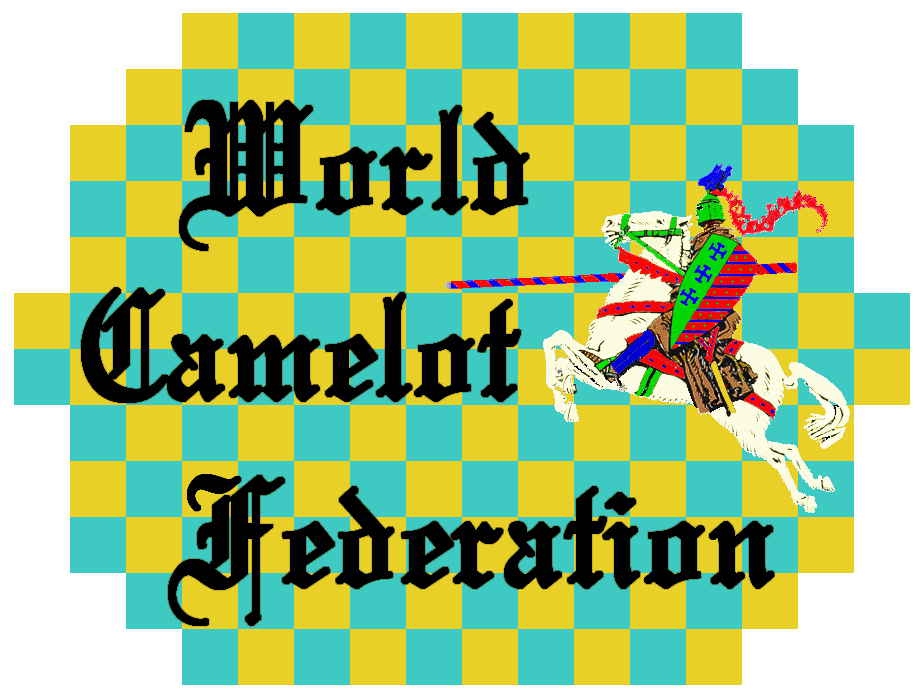The only defensive move is now 1.H2-F2. After
1...J2-H2, 2.G2-F3 I2-G2, 3.F3-E2 G2-F1 the attack has succeeded. There is the
desperation move 4.F2-G3 H2xF4, 5.E2-F2. If there had been no provision for castle
moves, the defense could maintain opposition for a draw. But 5....F1-G1 forces
the defense to clear a path for F4 to reach the castle. Other possibilities,
such as interchanging knight and man, are left to the reader. [Editor's
Note: For a complete analysis of those possibilities, go
here.]
Already a few middle-game questions can be asked:
How early should one begin watching for certain material combinations? Before
getting to end-play will there be stalling moves to provide the initiative
later? Can unfavorable circumstances be reversed?
Observations about
the castle-move rule
Consider the position in Figure 5, in which each
player has used both castle moves.

Figure 5
The position is reminiscent of opposition at
Chess, but these are not Chess kings. [Editor's note:
For a discussion of the opposition in
Camelot, go
here.] In Camelot the attacker has the advantage,
whoever has the move. The pairs of moves 1.G5-F5 G7-H6, or 1.G5-H5 G7-F6 allow the
attacker to advance, with other moves by the defense being even worse.
The attacker on the move marches to the edge of
the board, say to K7, with the defender following along to K5. But then
5....K7-L6 has gained one rank on the board. There follows 6.K5-K4 L6-L5, 7.K4-L4
(or 6.K5-L4 L6-K6, 7.L4-K4 K6-L5, 8.K4-L4, resulting in the same position either
way). Now, 7....L5-L6 has reversed the opposition. The attacker guides the
position back to the center of the board, choosing the right time to advance
toward the castle as indicated above.
This position is extremely artificial, but it
illustrates clearly the perceptiveness of the gameís creator in limiting the
number of castle moves. Without such a limit, whether 2 (as stated), 30, or 100,
either side could use a castle move as a stalling technique, and positions which
can now be won would become draws. [Editor's Note: The limit of two castle
moves per game was established by a 1931 change to the original (1930) Parker
Brothers rules.]
~~~~~~~~~
[Editor's Note: The following table displays outcomes, based upon analysis by
Michael Nolan, of all possible two vs. two combinations of pieces set up as in Figure 4,
repeated below.]

